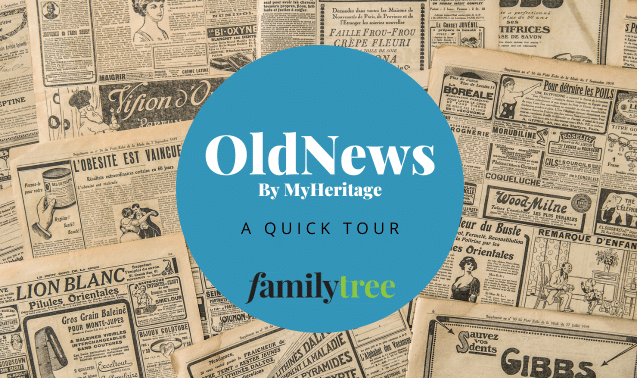Sign up for the Family Tree Newsletter! Plus, you’ll receive our 10 Essential Genealogy Research Forms PDF as a special thank you.
Get Your Free Genealogy Forms
"*" indicates required fields
00:00:01
AccessGenealogy is a free website that points to online resources for your US genealogy research. Hi, I’m Sunny Morton, here with a quick tour of AccessGenealogy.com.
00:00:15
AccessGenealogy debuted in 1999 as an online finding aid for free family history resources. I think of the site like that information or help desk you find at the entrance to a large building complex to point you [in] the direction you want to go.
00:00:34
And there are lots of directions you might want to go. AccessGenealogy now points to nearly a quarter-million links and claims to be one of the largest online genealogy directories.
00:00:46
Let me show you around. On the home page, scroll down until you see the top menu bar and the welcome message.
00:00:54
Here, you’ll learn that their goal is to point you toward free resources for US genealogy and that their special niche is providing resources for Native American research.
00:01:07
If you are researching Native American roots, click on their guide to Native American History and Genealogy and get started.
00:01:15
They also have a dedicated portal for tracing African American roots, which then, in turn, leads to fantastic resources by state.
00:01:25
What else? Let’s take a look at some of their record types here: cemetery records, census records, military records, vital records. (They have two additional categories called Databases and DNA. We’ll touch on those in just a second.)
But let’s take an example. Look at one of their record-type resources: census records. So again, scroll down. And I will say that, across the site, you may need to duck and roll over some of the advertisements and that their menu bar does take up quite a bit of room and sometimes doubles up on you.
00:02:04
But keep your eye on the prize. Keep scrolling down until you see what you want to learn. Here, it’s about census records.
00:02:12
You’ll begin with a little bit of background information.
00:02:17
And then something I was super happy to see: links to blank census forms. So I actually have a set of blank census forms printed out for my reference—whenever I just need to know which years did they ask the naturalization or the number of children a woman had birthed.
00:02:36
So these census forms can help you with that. And it can also help you read the columns if you’re on a census form where your ancestors are listed and you can’t quite read it—it’s a little smudged in the header—you can refer back to these blank forms to see what that column says.
00:02:55
Then you scroll down a little further, and that’s where you start finding links to the resources online. There are resources for US records by state and then, later on down, even for the UK and Canada.
00:03:12
But here, let’s take a look at Colorado, for example. Again, you’re going to see some of these ads. And you’ll need to scroll down again. And then you get to a brief introduction again.
00:03:28
And first, you’re going to see links that are organized by the year, and then these are particular places. And there are going to be comments for who hosts these particular items and whether something is behind a paywall. So you’ll click to go to that resource, which itself may or may not be hosted on Access Genealogy. Often it will be hosted by another organization.
So you may wonder, since we’re looking at census records, for example, aren’t all census records already easily searchable at your favorite genealogy website? Why would you need a directory to find specific things?
00:04:07
What I appreciate here are some of the transcriptions that you can find that were made by locals, meaning they might know the place names and the surnames, which can be really helpful.
00:04:19
And then you might also find things like this mortality index that was one of the special census schedules taken in addition to the population schedules we’re most familiar with. Though Ancestry.com does have a lot of the mortality schedules and the other special census schedules, but [they don’t have] all of them. And not everyone subscribes to Ancestry.
There are also a lot of links to state census data, if you scroll down a little further to find that. Because there were state censuses taken during different time periods.
00:04:56
So returning to the top menu bar here, you’re going to follow similar processes to explore the other record-type labels. The DNA tab leads to a basic introduction to commonly asked DNA questions.
00:05:11
So the last one, and certainly not least, is definitely worth exploring: Databases. The Databases section gives a list of all the collections that are currently hosted by AccessGenealogy itself, meaning you don’t need to go somewhere else to actually search them. Now these are also going to be cataloged throughout the site (wherever they should be locale-wise). But this is a central location for exploring and searching them.
00:05:42
So let’s take a look here at this one for an Alabama cemetery database and it gives you a little bit of background information and what the size of the database is. Then if you click to search—again, you’ll find a summary of what’s included in this database—and then you’ll find search boxes. And there may be just one search field (or there may be multiple search fields) where you can enter information and then search. And then you’ll see results come up below.
That’s AccessGenealogy in a nutshell. I’m Sunny Morton for Family Tree Magazine.
A version of this article appeared in the November/December 2021 issue of Family Tree Magazine.







